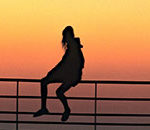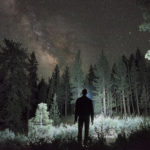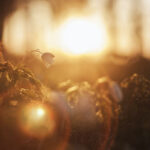We’ve all had those days…you head out to some glorious location in the wilderness, take perhaps hundreds of photographs, head home, and find a memory card full of mediocre shots. What happened? How can you improve your craft and create better pictures? In the following video, Robert Rodriguez Jr. shares insights into his successful decade-long career as a landscape photographer:
Whether you’re starting out in landscape photography or are a seasoned shooter, Rodriguez Jr.’s list of insights are worth noting.
1. Ask Yourself Questions
When he started photography, Rodriguez Jr.’s first attempts at capturing the beauty he saw in nature were failures. His photographs lacked vision and clarity, which led him to seriously evaluate what he brought to the equation. He says that his failures inspired him to ask himself questions, and that this is important to every photographer. Why do you shoot? What is your goal? What do you want to get out of it? For Rodriguez Jr., love of time spent in nature and a desire to share that experience with others is important.
2. Reveal the Extraordinary in Mundane Places
Rodriguez Jr. says, “the best photographers that I admired…were interpreting familiar landscapes they were in an using their own personalities in the landscapes they were shooting.” He began thinking about his subjects differently and using his surroundings and his own experience with the outdoors as inspiration. An iconic location isn’t required; beauty can be found anywhere.

Rodriguez Jr. finds inspiration in the Hudson River Valley.
3. Use Your Own Experience as Motivation
Rodriguez Jr. uses allegory and symbolism in his photographs. He uses the language of composition, light, form, color, mood, and drama to represent his personal experience of a place.

In this image, Rodriguez was visualizing the passage of time.
4. Use Art as Inspiration
The Hudson River Valley School of Painters inspired Rodriguez Jr. to pay more attention to light and form in the landscapes he shoots. He encourages other photographers to study the works of master painters to learn more about light, color, and drama in nature.

Thomas Cole, “The Oxbow”, 1836
5. Keep it Simple
Simplicity is often synonymous with beauty. In order to make elements work together, they should be as simple as possible. Think about framing, rhythm, and ways to keep the viewer’s eye moving through the frame in pleasing ways. Every element should serve a purpose; what doesn’t add to the quality of the image detracts from it.

Simple shapes and textures are aesthetically pleasing.
6. Wait for the Right Light
Nothing is more important than light. Look at light as a subject in your photographs, just as you would look at a mountain as a subject. Focus on light and what it’s doing to the landscape. Be willing to wait for it.

Rodriguez Jr. almost left this scene, but he waited for the light and great results.
7. View Failure as Opportunity
Rodriguez Jr. explains that he failed a lot in his photography for various reasons, but that there will always be bright spots and breakthroughs that will make your effort worthwhile.

Some of Rodriguez Jr.’s failed attempts.
8. Practice.
Time and practice are essential to success. Don’t wait for the perfect time. Just get out there and shoot. The perfect time and place shouldn’t be the goal if pursuing that goal keeps you from practicing and progressing.

This photo of his son is one of Rodriguez Jr.’s favorite images.
Bonus Tips for Successful Landscape Photography
In addition to his “big picture” insights, Rodriguez Jr. offers the following tips for successful landscape photography:
- Learn your gear inside out. Master your tools so that they become an extension of your mind.
- Learn the fundamentals of photography (aperture, depth of field, shutter speed, etc.). This knowledge is widely available. Know the fundamentals well enough that you don’t even have to think about them.
- Get quality gear. Don’t suffer in the field because of inferior equipment. Rodriguez Jr. uses a Manfrotto carbon fiber tripod, a Gura Gear backpack, and quality lenses. Investing in quality lenses can be more important than re-investing in good camera bodies year after year.
- Get quality apparel, too. Solid hiking boots, a good base layer, and quality rain gear are key field items, and it’s worth buying gear that will last a long time.
- Find inspiration through education. It’s easier to measure progress when you aren’t shooting randomly. Spending focused time in a workshop or on a project will advance your photography more than shooting here and there when time is available.
- Print your work. This helps to refine your vision, gives you better appreciation of your work, and makes what you’re doing more tangible.
- Physical health and mindfulness provide a good experience in the field. When your mind is clear and you feel good, you can be more creative.
- Time and luck. Keep at it. Invest time in your work.
Rodriguez Jr. has two favorite quotes regarding that last tip:
“Luck is what happens when preparation meets opportunity.” – Seneca
“Good luck is another name for tenacity of purpose.” – Ralph Waldo Emerson
Like This Article?
Don't Miss The Next One!
Join over 100,000 photographers of all experience levels who receive our free photography tips and articles to stay current:






Leave a Reply